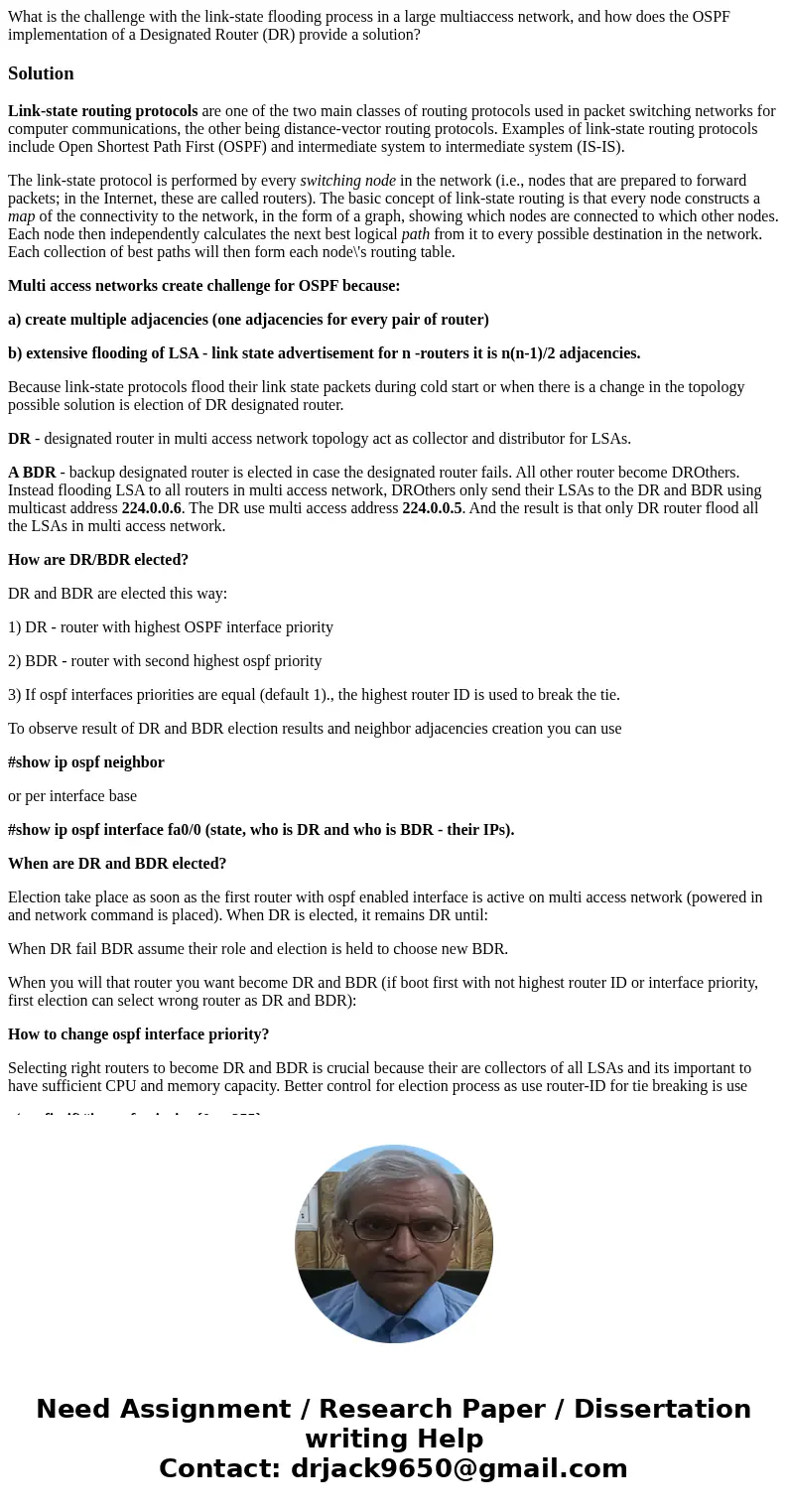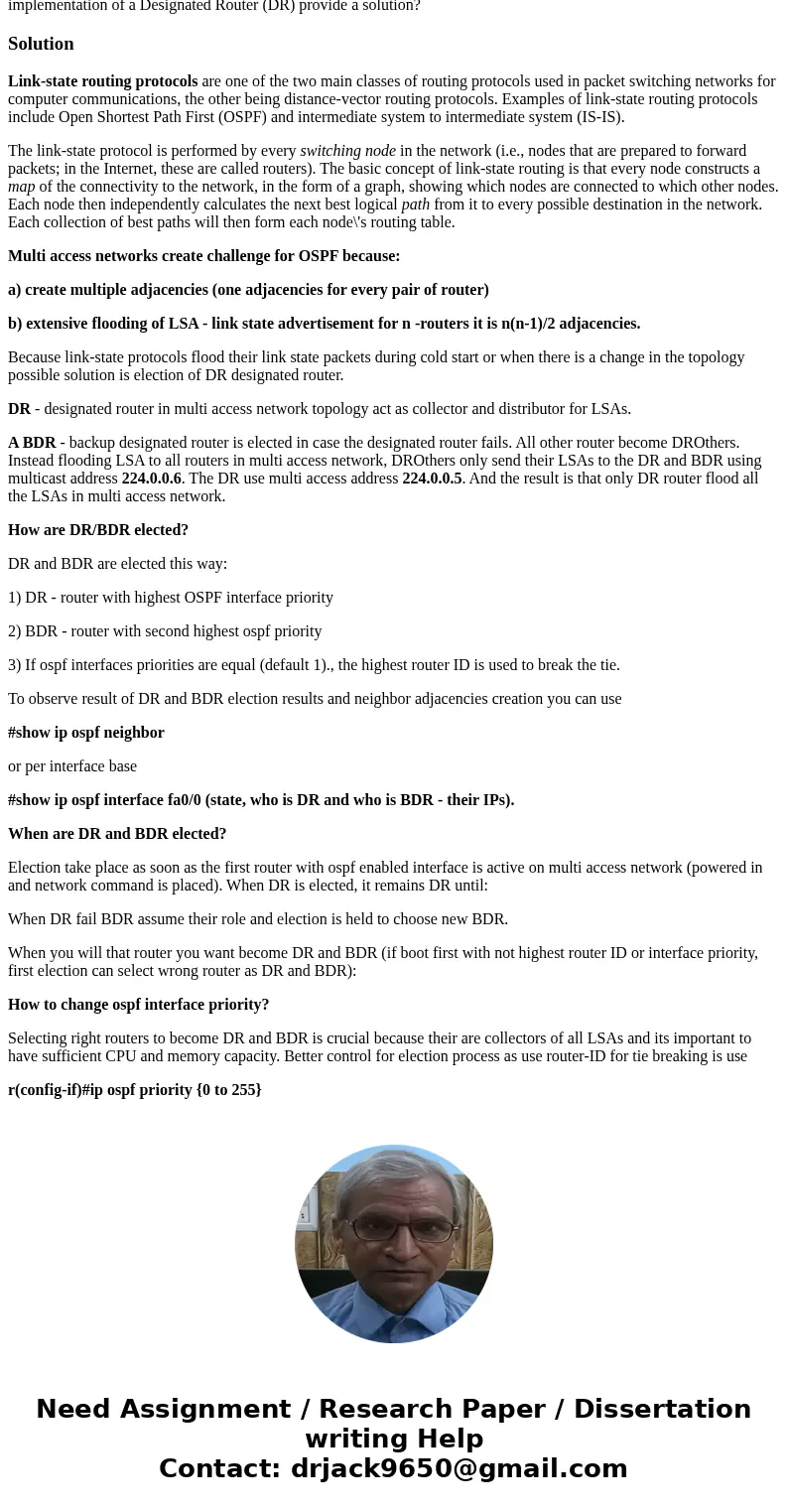What is the challenge with the linkstate flooding process in
What is the challenge with the link-state flooding process in a large multiaccess network, and how does the OSPF implementation of a Designated Router (DR) provide a solution?
Solution
Link-state routing protocols are one of the two main classes of routing protocols used in packet switching networks for computer communications, the other being distance-vector routing protocols. Examples of link-state routing protocols include Open Shortest Path First (OSPF) and intermediate system to intermediate system (IS-IS).
The link-state protocol is performed by every switching node in the network (i.e., nodes that are prepared to forward packets; in the Internet, these are called routers). The basic concept of link-state routing is that every node constructs a map of the connectivity to the network, in the form of a graph, showing which nodes are connected to which other nodes. Each node then independently calculates the next best logical path from it to every possible destination in the network. Each collection of best paths will then form each node\'s routing table.
Multi access networks create challenge for OSPF because:
a) create multiple adjacencies (one adjacencies for every pair of router)
b) extensive flooding of LSA - link state advertisement for n -routers it is n(n-1)/2 adjacencies.
Because link-state protocols flood their link state packets during cold start or when there is a change in the topology possible solution is election of DR designated router.
DR - designated router in multi access network topology act as collector and distributor for LSAs.
A BDR - backup designated router is elected in case the designated router fails. All other router become DROthers. Instead flooding LSA to all routers in multi access network, DROthers only send their LSAs to the DR and BDR using multicast address 224.0.0.6. The DR use multi access address 224.0.0.5. And the result is that only DR router flood all the LSAs in multi access network.
How are DR/BDR elected?
DR and BDR are elected this way:
1) DR - router with highest OSPF interface priority
2) BDR - router with second highest ospf priority
3) If ospf interfaces priorities are equal (default 1)., the highest router ID is used to break the tie.
To observe result of DR and BDR election results and neighbor adjacencies creation you can use
#show ip ospf neighbor
or per interface base
#show ip ospf interface fa0/0 (state, who is DR and who is BDR - their IPs).
When are DR and BDR elected?
Election take place as soon as the first router with ospf enabled interface is active on multi access network (powered in and network command is placed). When DR is elected, it remains DR until:
When DR fail BDR assume their role and election is held to choose new BDR.
When you will that router you want become DR and BDR (if boot first with not highest router ID or interface priority, first election can select wrong router as DR and BDR):
How to change ospf interface priority?
Selecting right routers to become DR and BDR is crucial because their are collectors of all LSAs and its important to have sufficient CPU and memory capacity. Better control for election process as use router-ID for tie breaking is use
r(config-if)#ip ospf priority {0 to 255}


 Homework Sourse
Homework Sourse